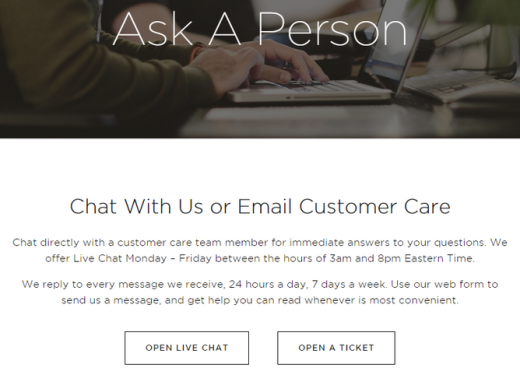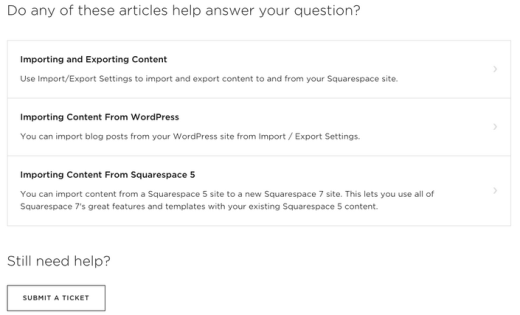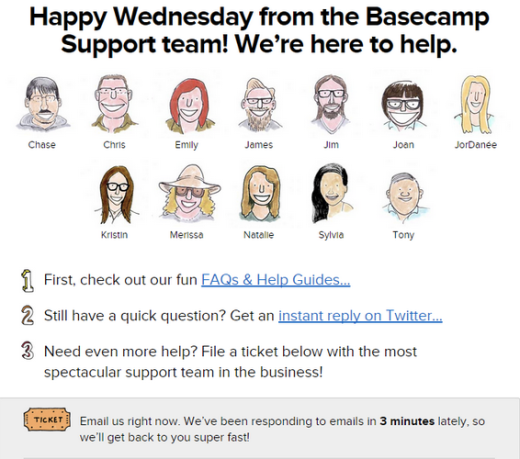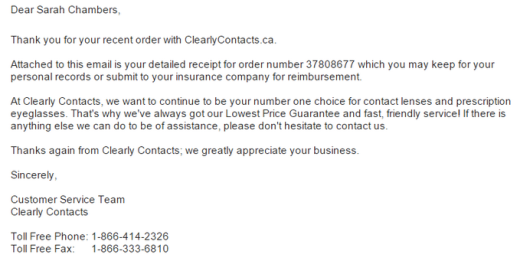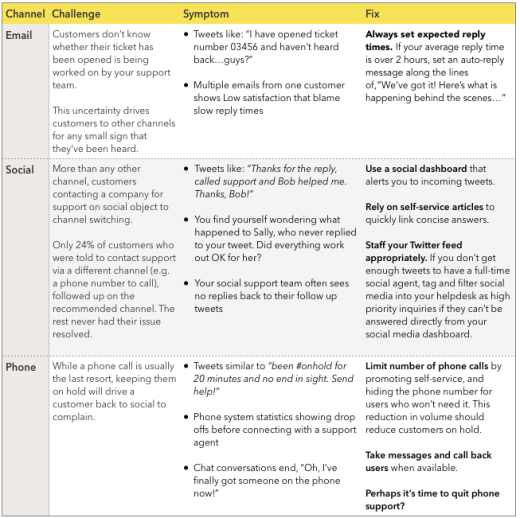
Picture this: your customer encounters an issue. She checks your website to see if she can find an answer there. No luck. She checks out your ‘Contact Support’ page. There are a few options here, so she decides to shoot an email. A few hours later, she’s tired of waiting and tweets at your company to see if that’s any quicker. Finally, someone responds to her tweet…with a 1-800 number to contact the support team.
Yikes. You’ve just made her reach out THREE times, just for one answer. You may mark this as a successful resolution in your own books, but at what cost?
Not only is channel switching inefficient and frustrating for your customers, it’s a dangerous churn signal for you.
Here’s a finding from The Effortless Experience that might surprise you: 96 percent of customers who experience channel switching or other friction-causing scenarios, later report a lack of brand loyalty to that particular company. That makes nearly every customer who goes through a “high-effort” experience a likely candidate for churn.
Fortunately, there’s a solution: focus on guiding customers to the most efficient channel for them, and limit the total number of channels available. Customers state across the board that they don’t care about the number of channels available to them, as long as the case is resolved quickly and easily.
The Effortless Experience found that 8 out of 10 customers would “entertain nearly any self-service option or channel as long as they are confident it will create a faster and easier resolution experience.”
In other words, you don’t need to jump into every new channel available. For most customers, supporting a few, carefully chosen channels really well will do the trick.
So how do you decide which ones to use? There’s an HR funnel, there’s an inbound marketing funnel – let’s think about how to build a support funnel that can help you manage and divert your incoming traffic.
Build a support funnel to guide visitors
Every part of your business has a funnel: you’ve got the sales funnel, the marketing funnel, the recruitment funnel. It’s important to start thinking of support in this way as well. A support funnel consists of a series of guided choices to efficiently direct a customer to information they need without getting lost. In driving the customer to the solution, YOU are the expert. You know the best path to success for them.
What’s the first step you want every customer to take when looking for an answer? In other words, where will they get help for their specific issue most quickly?
Give your customer resources to find their answer
Most of the time, that first step will be self-service or through a knowledge base. Is this easy for customers to find when they’re using your product? It should be. After all, you want it to be the first place customers look for answers.
Set clear expectations for response
If they aren’t able to resolve their questions using your support resources, they’ll need to contact support directly. Instead of making the customer figure that out on their own, tell them what to do now, and what they can expect next.
Squarespace does a great job with all of this. They first guide customers to select a support option, with service expectations listed directly on the contact form. If you do open a ticket, they even try suggesting a help article, just in case you weren’t sure what to search for:
Basecamp lays everything out in their own voice
Check out this example from Basecamp. They set clear escalation steps, from self-service to social support to email support. Because they set clear expectations, customers know which channel to use first.
These steps ensure customers get the appropriate level of support for their question, and prevent channel switching.
ClearlyContacts knows when a call is best
High priority, private concerns (read: financial) usually drive customers to pick up the phone.
Make sure your support phone number is easy for paying customers to find. Again, think about the funnel. What questions will a customer ask? What signals will they give before they need to pick up the phone?
If most of your phone calls are about billing, try only including the support number on invoices or on the account screen for your customer’s easy reference. This is an issue that needs personal attention.
“Need billing help? The phone is the fastest way to reach us.”
However, it’s possible to be too available. Listing a dozen contact options may leave your customer unsure of the best way to contact you. Just like a good customer onboarding program, you’re the authority in this – you can tell them what their next step is!
How to build a unified channel support system
Each channel comes with its own unique challenges that encourage channel switching:
- Challenges: When customers email in, they might not know when their issue is being worked on, or if your support team has opened the ticket and is composing a reply right now. This uncertainty drives customers to other channels for any small sign that they’ve been heard.
- Symptoms: Tweets saying things like, “I have opened ticket number 03456 and haven’t heard back…,” multiple emails from the same customer, poor satisfaction ratings based on slow reply time.
- Solution: Always set expected reply times, like in the Basecamp example above. If it’s over two hours, set an auto-reply message to make sure the customer knows their ticket went through.
Social
- Challenges: Expectations for reply times are much higher, and customers using social media to reach out for support object to channel switching more so than others. Of customers who were told to use a different contact method, only 24 percent of them did.
- Symptoms: No replies to your follow-up support tweets, messages like “thanks for the reply, called support and got help from Bob. Thanks,” finding yourself wondering what happened to the customer who never replied back to your support. Did she work everything out?
- Solutions: Use a social listening dashboard to see all incoming tweets. Also be sure to take advantage of knowledge base articles that you can quickly link to, to answer a customer’s question. And of course, staff your Twitter feed appropriately.
Phone
- Challenges: A phone call is usually the last resort for a customer, and keeping them on hold will drive them back to social to complain.
- Symptoms: Tweets like, “Been #onhold for 20 minutes and no end in sight,” phone system stats showing dropoffs before connecting with a support agent, and phone calls start with, “Oh, finally! I got through to someone.”
- Solutions: Limit the number of calls you get by encouraging self-service or other channels where appropriate, and consider hiding the phone number for users who won’t need it. You can also take messages and call customers back later, if your support software allows for it.
The final word
Consider this your call to action to make customer problems go away as fast as possible.
Channel switching is a hassle for everyone involved and a major loss for you. When you funnel your support traffic to the most efficient place first, you’ll see an immediate shift take place for everyone involved. Support can resolve inquiries more quickly and customers won’t feel the need to flood every channel.
Friction? What friction?
Read Next: The secret to super fast growth? Customer service
Image credit: Shutterstock
This post first appeared on Mention.
Get the TNW newsletter
Get the most important tech news in your inbox each week.


